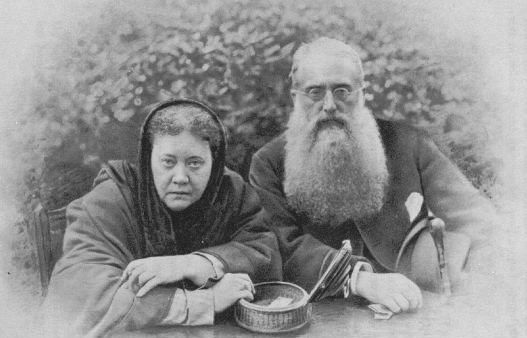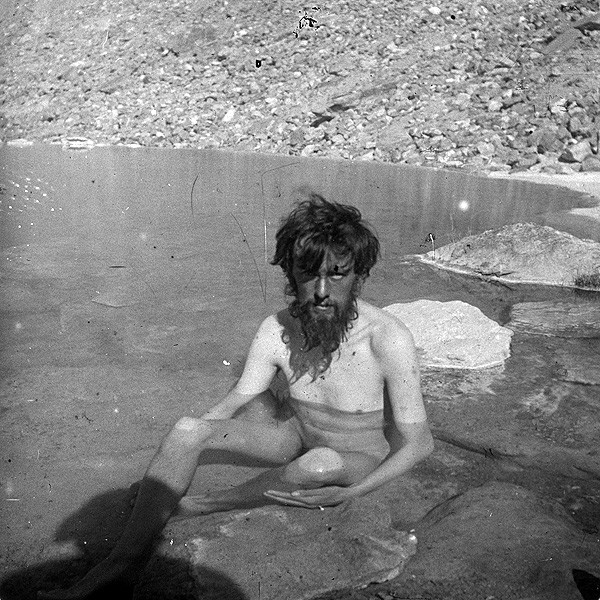Throughout the centuries there have been numerous groups–typically labeled as cults–that are surrounded by an unwavering belief in the paranormal or supernatural connections between worlds. These cults have ranged from entirely peaceful to large and lethal movements that claimed lives as they grew in size. Cults like the Manson Family and Johnstown were unquestionably some of the most deadly movements that have popped up throughout modern times. Although it’s fair to say that these particular cults weren’t actually led by true followers of any particular paranormal or supernatural belief system, they had followers willing to die or even kill for one person’s twisted views, religious beliefs, or teachings. We decided to take a look at some of the most famous paranormal and supernatural societies that helped to inspire and ultimately birthed many mystical and paranormal beliefs that still exist today.
Theosophical Society

Madame Helena Blavatsky was a Russian occultist, medium, and philosopher who co-founded the Theosophical Society in 1875. She published her first doctrine, Isis Unveiled in 1877 which outlined the Theosophical world-view which closely associated Hermeticism and Neoplatonism. There are now various branches of theosophical beliefs, though they all hold certain common characteristics. There was a deeper spiritual reality and direct contact with transcending human consciousness; this is known as a mystical experience.
They also emphasize esoteric doctrine, which leads to small factions within the larger name of the society. Theosophists maintain a healthy fascination with the supernatural or extraordinary occurrences to achieve higher psychic and spiritual powers. Finally, theosophy displays a preference of monism, which is the view that reality is constituted of one principle, such as mind or spirit. The Theosophists Society strives to combine all forms of religious, spiritual, and inner teaching of sacred texts; to provide the deepest form of self-connection with the “divine wisdom”.
Order of the Solar Temple
The Solar Temple was founded in Geneva in 1984, tracing its roots back to a break-away group of Knights Templar. This secret society’s leader, Joseph Di Mambro, brainwashed his followers into believing he was a reincarnation of one of the Knights Templar. His daughter was believed to be the “Cosmic Child” that would lead them to a planet near the Sirius star after their deaths. The Solar Temple began doing a mixture of rituals, making altars, as well as conducting occultist acts, and ceremonial sexual acts on its members. Their focus was on the worldwide catastrophe in the form of an apocalyptic event in the mid-1990s. This is what led to famous strings of murder-suicides that spanned a few years; this resulted in the loss of 74 members, the order is best known for this world-wide action.
Heaven’s Gate
Heaven’s Gate focused its beliefs on making it back into the Kingdom of Heaven from their Earth-bound soul deposits. They believe Jesus was the first “prepped vehicle” chosen to lead their followers to the next level and into the Kingdom of Heaven. Now, some 2000 years later their leaders still uphold the task of leading the order in the name of the “father’s’’ original task by combining cosmic beings and Christian ideologies. In 1997 Marshall Applewhite and 38 of his followers believed the Hale-Bopp Comet was the key to leaving Earth and the beginning of their cosmic journey into space and on to their next level of existence. The group committed mass suicide in attempts to free their souls and join their fellow cosmic beings; this led to the cult being front and center of worldwide media for quite a while.
Bohemian Grove
This San Francisco based gentlemen’s club is known for its all-male membership club made up of the most prominent men in the world. Ranging from business leaders, artists, musicians, government officials, and even former presidents; there is no shortage of powerful men within this group. The Grove is particularly famous for holding the Manhattan Project planning meeting in September 1942, as well as being a pop-culture parody–thanks to Richard Nixon. Though on the surface the Grove looks to be another “normal” high society club, many reports have brought out a darker looking side to this group. Allegedly they partake in worshiping a large stone owl called Moloch, burning bodies, Satanic practices, and sacrificing virgins. Throughout the 140 years that the Grove has been operating, their societal values have remained incredibly secretive.
Order of Thelema

Founded by famous English occultist, ceremonial magician, poet, and novelist Aleister Crowley formed in the twentieth century. It is a complicated set of magical, mystical, and spiritual beliefs that can range from atheistic to polytheistic views. Thelema is based out of the Book of the Law, which led Crowley to label himself as a prophet and encourage followers to ascend to higher states of existence to unite themselves with one’s ultimate purpose in life. Followers of the Order of Thelema practice large ranges of magick and mysticism, as their concepts are rooted in occultism; there is no shortage of rituals, spirits, and paranormal experiences here. Aspects of Thelema and Crowley’s other writings gave birth to the development of Wicca, Modern Paganism, Chaos Magick, some variations of Satanism and Scientology.
Cult of Cthulhu and Necronomicon
This particular cult was brought on by the creations of H.P. Lovecraft; originally only a fictional work that featured various cults that worshipped Cthulhu, the destroyer of humanity, and bringing of an era of chaos. Over the years this fictional work has inspired the creation of real cults that combined Lovecraft’s mythology with other beliefs such as Occultist dark arts and Satanism. Most of these groups use Lovecraft’s Necronomicon as a means by which they derived their beliefs and structured their cults. These beliefs combined with the dark arts caused these groups to take on a violent slant, as well as the ritualistic use of magic from Satanic teachings. This has accumulated into the establishment of a little known, yet mightily feared reputation. Lovecraft’s works have inspired many aspects to horror culture of literature, well as horror movies, and is said to be the father of cosmic horror. The cults that use his writings to influence their belief systems are still around today and doing their best to grow in numbers as they prepare for the end of days.
Though these cults or orders are just a few in the long list of paranormal or mystic beliefs, there are hundreds of groups that can fall into this category. Most of them are still practicing their beliefs to this day in one form or another, but surprisingly not all of them are to be feared as criminal or dangerous. One thing they all share is the belief that there is another world across the veil from our own and it can be connected with. Within that connection, they believe we are able to heighten our inner connection to the higher powers we may follow or believe in.
The need to connect to these higher powers in life not only helped masses of people to find a community to belong in, but it also helped to shape government as we know it today and business communities as well. These groups also influenced hundreds of books, movies, TV shows, and a large amount of horror culture to become what it is today–such as American Horror Story: Cult. There is an endless list of examples that can be used to highlight these groups and their beliefs being used to wow us on the big screen and have elicited jaw-dropping horror within each of us. Without the belief in the paranormal and mystical world, horror would simply be stuck in the slasher and gore realm.

